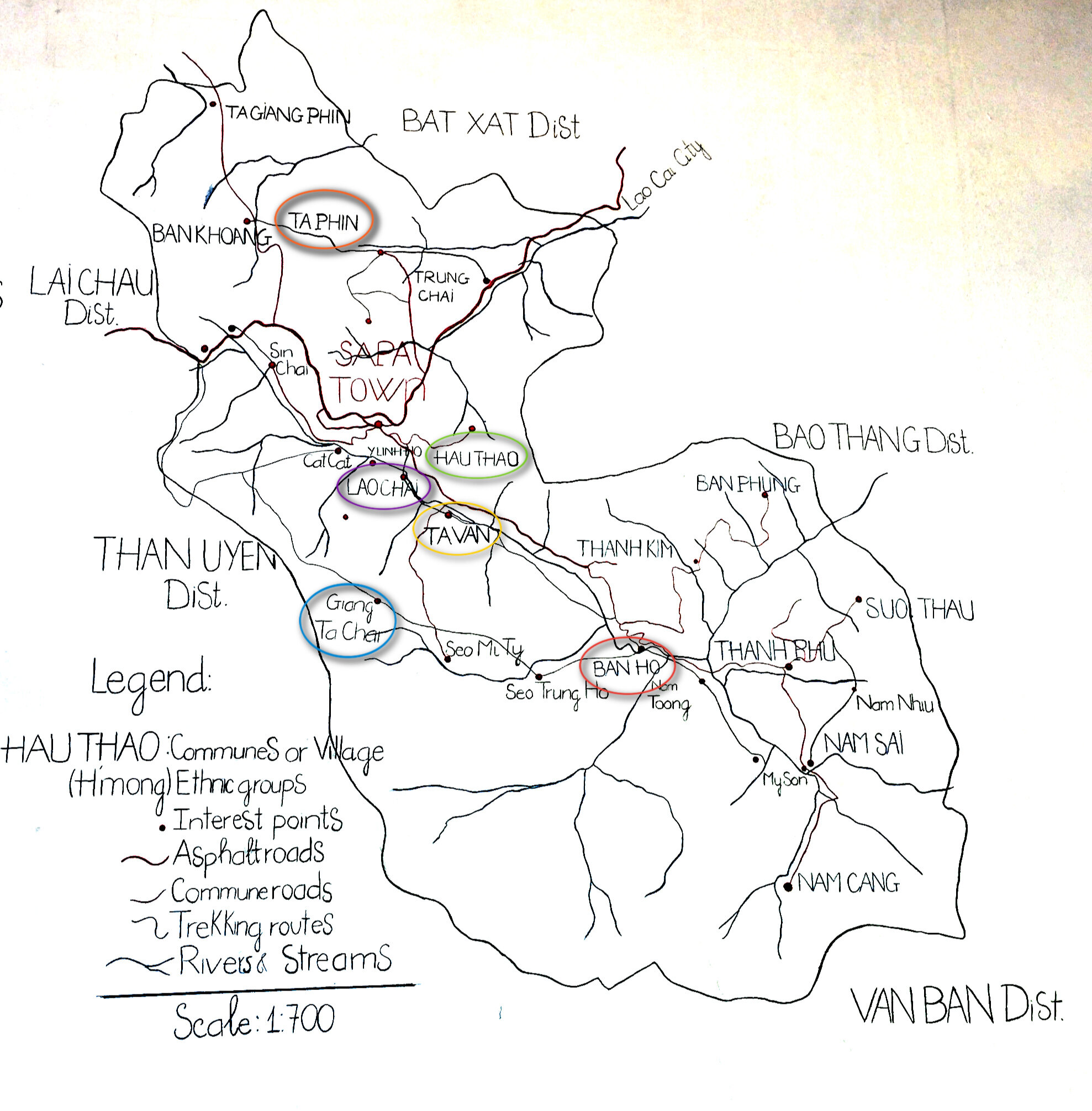There’s no nice way to say it . . . Cat Cat Village is fake. It’s an entirely modern tourist trap built as a combo souvenir shop/Instagram set. Can you see ethnic minority people there? Sure. Can you buy genuine handicrafts from them? Yes, assuming you know what to look for.
90% of the place, however, is Vietnamese shopkeepers selling junk souvenirs and costumes to Vietnamese tourists, who spend the day taking photos for social media. The costumes are about as close to what local minority women wear as Disney’s Princess Jasmine outfit is to traditional Kurdish costume.
No one lives in the “H’mong family houses,” they just sell batik outside. To add insult to injury, Vietnamese pop music blasts through loudspeakers, and every couple hours there’s a ridiculous dance show supposedly featuring ethnic minority performers doing traditional dances in traditional costume (nope, definitely not, and barely).
The village is more or less a convenience. If you are:
too old or infirm to hike to a real village, or
you want to pick up Western style clothes “inspired by” the craft processes of the region (rather than wear things made by and for H’mong and Dao), or
you only travel for the ‘gram so you’re trying to get as many picturesque selfies as possible in one day
this is the place for you.
Personally, I only had two hours to spend here, and almost burst into tears when it seemed like the paths of shit shops would never end, and any good landscape shot was occupied by at least 3 couples inanely posing.
My best advice for Cat Cat village is:
#1 It’s better under the influence. The food is better, the trash souvenirs are funnier, the people taking their social media personas way too seriously seem less of a nuisance, and when you inevitably overpay for something, it bothers you less
#2 Do it backwards. The main entrance is right next door to the Sapa Sky hotel. Pay for your ticket, get a map, and then walk down the hill for 20 minutes to the other entrance and go in there. If you want to buy authentic clothes and snacks from local ethnic minority people, they occupy the far less trafficked backend of the park, probably because the rent is cheaper.




























































































